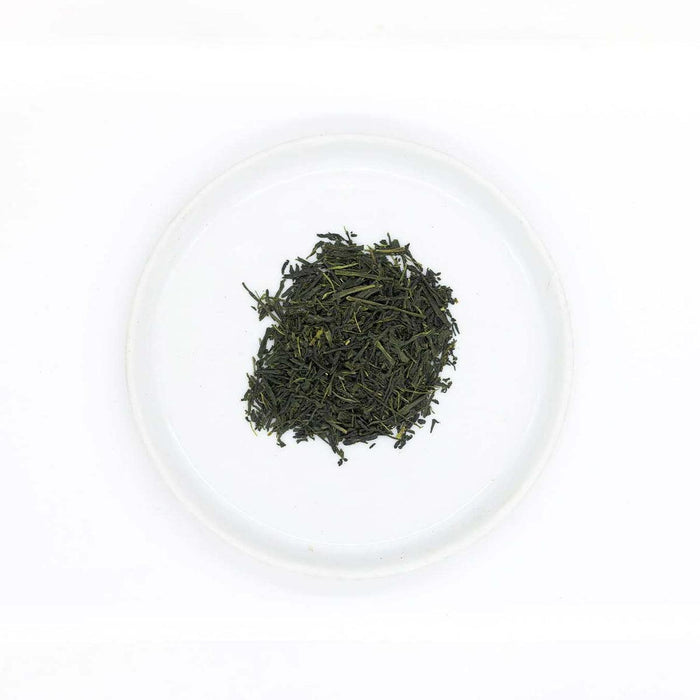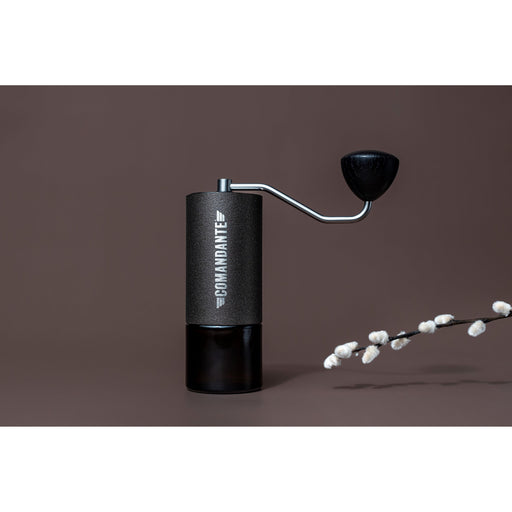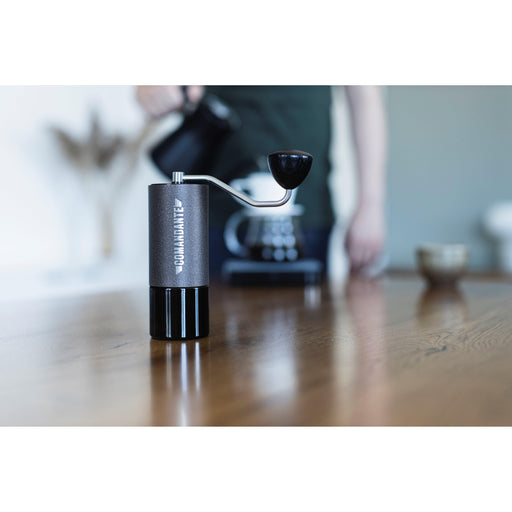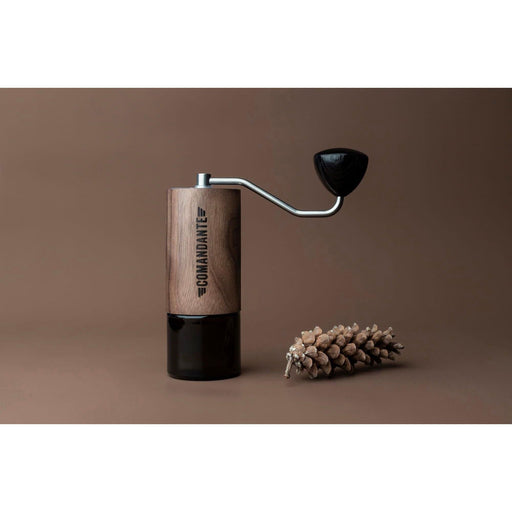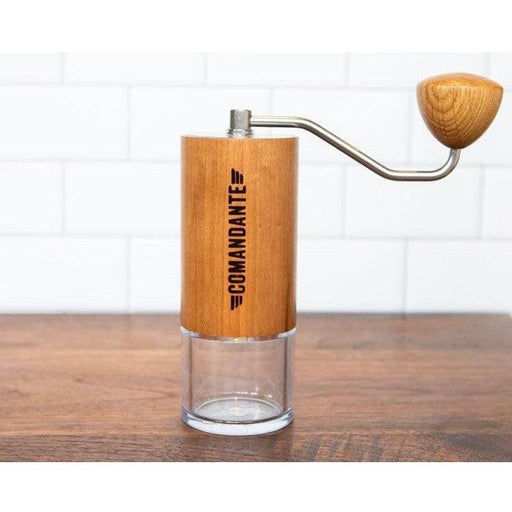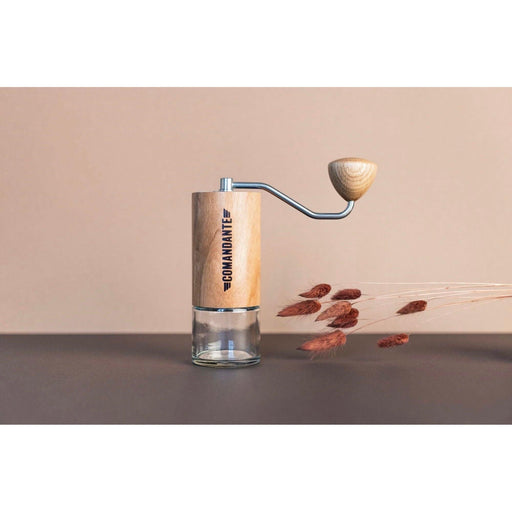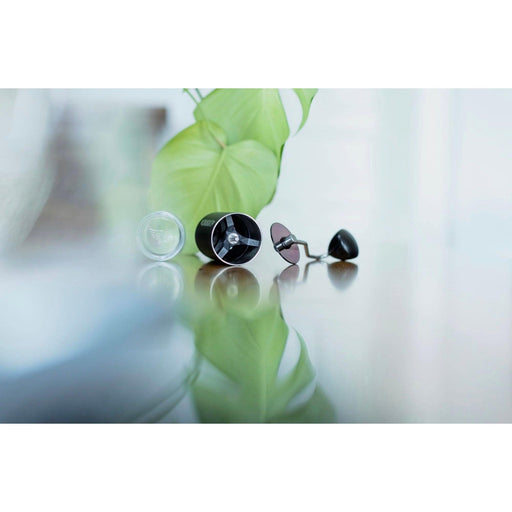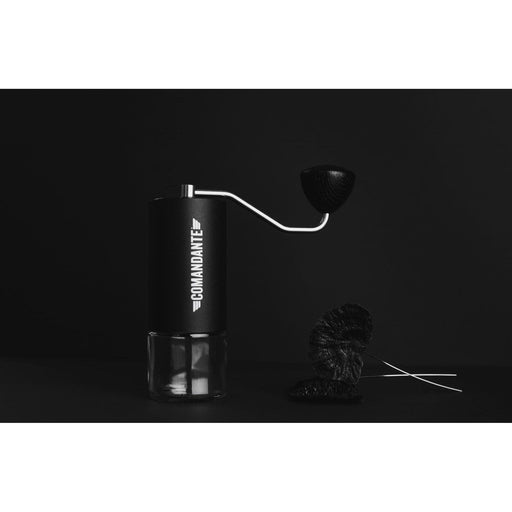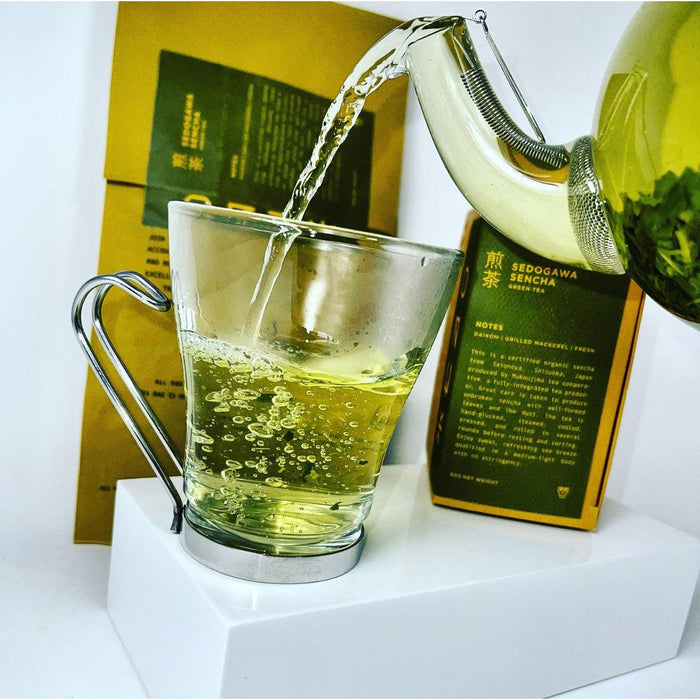
SEDOGAWA SENCHA | GREEN TEA
This certified organic green tea is an early spring, first flush production from Mukoujima tea cooperative, a fully-integrated producer that grows, processes and packs all their teas on-site. This tea lot is composed of 100% early-budding saemidori (“vivid green”) cultivar, and it undergoes an asamushi ("light steam") process. Great care is taken to produce unbroken leaves with low dust. The resulting brew yields a fluorescent yellow color with no astringency and a medium-light body. Enjoy a classic steamed green tea profile with notes of pure daikon radish and sea-breeze qualities. Available in 60g or 200g
ORIGIN: SETONOYA, SHIZUOKA, JAPAN
PROCESS: ASAMUSHI ("Light Steam") Sencha Process
CUP: DAIKON, GRILLED MACKEREL, FRESH
Story & Recipe
This sencha tea is Mukoujima cooperative’s only asamushi production. They cultivate sturdy tea trees to withstand stress from winter frost. In spring, the early buds are hand-plucked, then fanned to prevent oxidation. The leaves are steamed for 15 seconds, cooled, pressed, tumble-rolled, bundle-twisted, rolled twice into its needle shape, and finally dried to a moisture content of 4%. The result is a fairly crude tea, and before it is imported, it undergoes a secondary process of pan-drying, shaping, and sorting. However you decide to brew this tea offering, remember to use cooler water temperatures around 170°F.
MUKOUJIMA TEA COOPERATIVE
North of the Seto River (hence the name, Sedogawa, or 瀬戸川 - "Sedo river") in Shizuoka, Japan, the Mukoujima tea cooperative has been producing agrochemical-free, certified organic tea for twenty years and counting. Their planting approach is distinguished by their signature ippon-zitate method, or "one tree method," where the tea trees are planted farther apart to allow their roots to form deep and robust networks. Given the greater distance and the small cutting size, their tea plants take around 15 years to mature for harvest. The stems are much thicker and their roots are 8 times longer than normal. Mukoujima cooperative’s discipline in maintaining this planting method treats the land with reverence and presents a forward-thinking, ecology-focused mindset.
JAPANESE GREEN TEA
In Japan, green tea plants are generally harvested three-four times a year. The first flush harvest in early Spring (around late April to early May) is called ichibancha ("first tea"), and usually brings the best-quality leaves. After plucking, the tea leaves undergo a variety of green tea processes, distinct from the processing that oolong and black teas undergo. The common processing methods for Japanese green tea can include variable rounds of fanning, cooling, tumbling, shaping, roasting, and (most distinctly from Chinese green tea) steaming. Semi-processed green teas, also known as aracha ("crude tea"), are stored in low-humidity refrigeration until they are ordered and ready to be sorted and packaged, at which point the tea is re-fired and refined to increase its shelf life and flavor.
BREW RECIPE
HOT (12oz)
Tea: 4g
Water: 350g
Water Temp: 180°F
Total Brew Time: 2 mins

